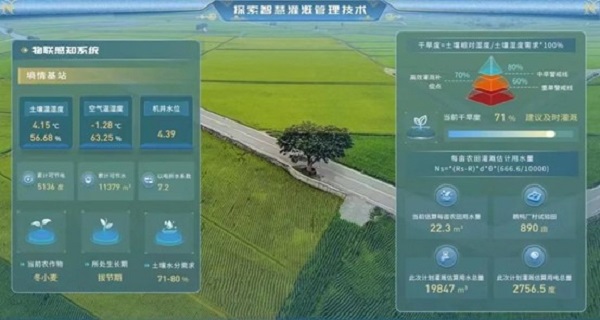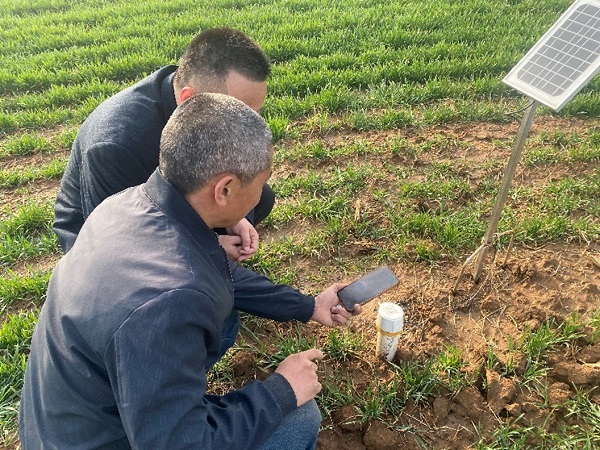Smart irrigation boosts rural vitalization in Shandong county
An electricity service application platform created by the State Grid Ningyang County Power Supply Company was recognized as an "excellent solution for innovative application", putting it among Shandong's provincial big data innovation application achievements in 2023, as announced by Shandong Provincial Big Data Bureau recently.

The electricity service application platform developed by the State Grid Ningyang County Power Supply Company. [Photo by Zhao Feng/for chinadaily.com.cn]
"Based on factors such as crop type, growth cycle, soil type, and moisture content, we researched algorithms that combine drought severity with electricity data. This enables the interchange, interconnection, and sharing of irrigation and electricity information, establishing a scientifically reasonable irrigation plan to support cost reduction and increased income from agricultural irrigation," said Su Bo, director of the power supply company's marketing department, when introducing the electricity service application platform.
Various internet of things (IoT) facilities have been installed at intervals along the roads surrounding the pilot farmland in the county. The facilities include remote irrigation gates, which can remotely start and stop water supply from pumping stations as well as provide automatic water supply and drainage in the fields, and weather and soil moisture monitoring stations, which can accurately collect information such as temperature, humidity, wind speed, wind direction, and soil temperature and humidity, and send it to the electricity service application platform system.

A farmer tries to use a soil moisture automatic monitoring instrument under the guidance of a technician on a farm in Ningyang county, Shandong province. [Photo by Zhao Feng/for chinadaily.com.cn]
"The application platform will display the received data in real time for technicians to observe, analyze, optimize and adjust their irrigation plans, which is very convenient," Su added.
It is estimated that in the pilot farmland, which spans an area of about 66.67 hectares, more than 34,000 cubic meters of water and over 4,700 kWh of electricity will be saved during the spring irrigation period. (Edited by Yang Yi)








